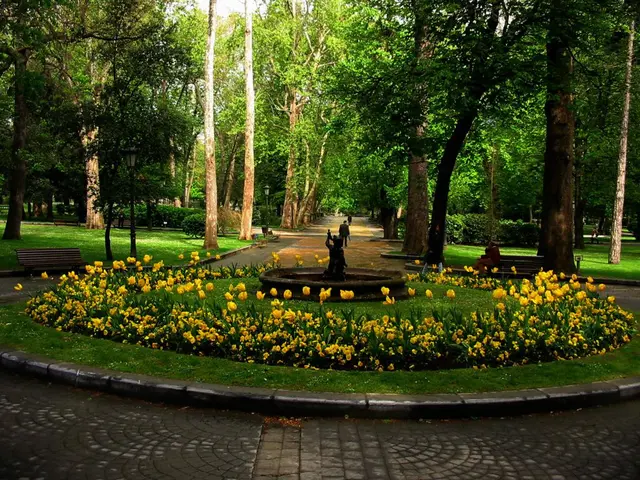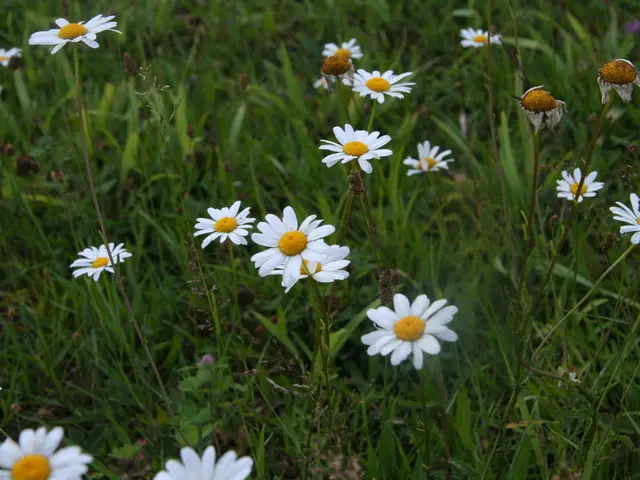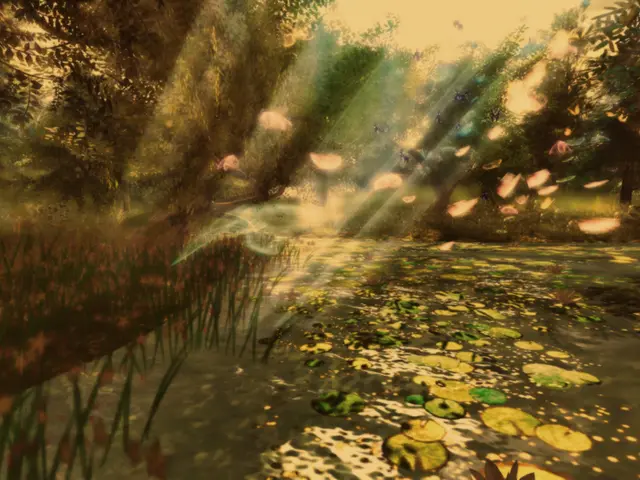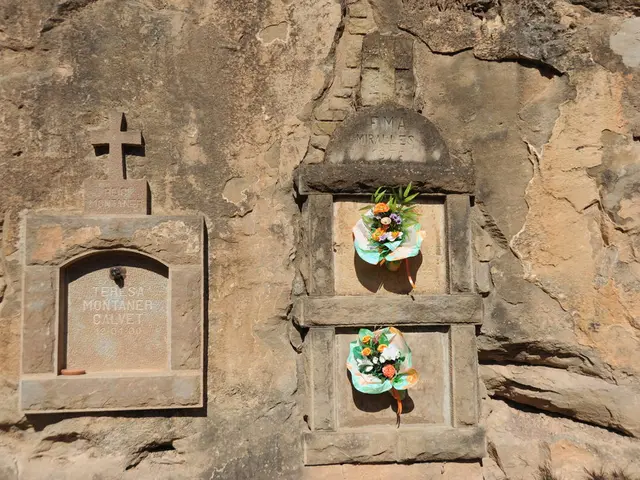The Reason Behind Pothos Plants Not Thriving After You Relocate Them (Regardless of Distance)
Moving your beloved pothos plant might feel like a walk in the park, but little changes in its environment can make it go from thriving to struggling. These tropical beauties are sensitive soulmates that easily pick up on even minor shifts in their surroundings – light, temperature, airflow, and more. If your once-vibrant pothos has hit a growth standstill post-relocation, it's probably whispering its concerns. Let's dive into some common reasons a pothos might freeze its growth and what to look out for in each case.
1. Sudden Light Exposure Shock
When you move your pothos, it may find itself in a completely different light scenario. A small shift in direction or distance from a window could translate into less or stronger light. These sudden changes can confuse your humble housemate, making it pause its growth while it adjusts. Pothos prefer bright, indirect light, and they tend to be slow adapters, so they might need some patience. Light is crucial in our green friends' lives, and an overabundance or a shortage can slow everything down. Try a gradual shift in positioning to help your plant adapt to its new home.
2. Humidity Levels Plummeting
Humidity is a big deal in the pothos world. A drier spot can bring stress, affecting how well your plant can absorb nutrients and retain water. This drop in moisture levels can lead to a slow-down or halt in growth. Pothos feel most at home when the air is humid and the surrounding atmosphere is moist. Add a humidifier or place the plant on a pebble tray with water to help create a more hospitable environment for your plant.
3. Chilly (or Hot) Blasts from Ventilation
Vents can cause big problems for your pothos if it's too close to one. Whether it's a heater or air conditioner, the bursts of hot or cold air can make life hard for your plant. These blasts mess with its growing conditions and may lead to leaf damage, potential death, or growth stagnation. Vents also make soil dry faster, creating additional challenges in maintaining a proper watering routine. Make sure your pothos has plenty of space around vents and resides in an area with consistent, gentle airflow.
4. Freezing Drafts
Even a minor draft can throw off a pothos – from open windows or doors or poorly insulated walls. These sudden temperature swings can give tropical houseplants a shock. They may go dormant when faced with such drastic changes. Drafts can also dry out the leaves and soil more quickly. If you suspect drafts might be an issue, relocate your pothos to a cozier spot or seal up drafty windows to maintain a consistent environment.
5. Bright and Beautiful: Shift From Indirect to Direct Sunlight
Direct sunlight can be harmful to pothos since they prefer indirect light. Sudden exposure to strong, direct light can burn the leaves, causing browning or fading. The plant might cease to grow altogether in an attempt to protect itself. Appropriate filtering through sheer curtains usually does the trick, so keep a close eye on your plant's leaf color and shape to determine whether the light is too intense.
6. Fluctuating Temperatures
Pothos like a steady temperature between 65 and 85 degrees Fahrenheit (and they're not shy about letting you know when they feel uncomfortable). A sudden temperature change can halt growth. This usually happens in areas with fluctuating temperatures, such as near windows, doors, or spaces without proper insulation. Stressed plants conserve energy by putting their growth on hold, so try to find a place for your pothos where the temperature remains stable.
7. Cold Roots: Near Windows or Walls
The temperature of the soil can affect root function. When your pothos is placed near a window or exterior wall, especially in cold seasons, the soil may become too cold. This slows down root absorption of water and nutrients, which in turn can affect plant growth. Check the temperature of the soil pot to see if it is cold, and if so, move it a few inches inward or add insulation to keep your pothos comfortable.
8. Getting Too Cozy with the Appliances
Some household appliances, like refrigerators or ovens, give off heat that may seem harmless but can affect plants. A pothos too close to these appliances could experience warm or dry air, making the soil dry faster and dropping the humidity levels around the plant. All of this stress can cause your houseplant to stall growth. Give your pothos some space from any heat sources, including televisions or lamps.
9. A Dark Transition: Temporarily Relying on Artificial Lighting Only
While pothos can survive in darker areas, overreliance on artificial lighting can lead to slower growth. Most common indoor lights don't provide the spectrum necessary for photosynthesis, although fluorescent or LED grow lights can help make up for the deficit. If your pothos used to bask in natural light and suddenly finds itself in a dim corner, it will require time to adapt. Supplemental grow lights placed near the plant can offer the support it needs to continue its growth journey.
10. Restricted Airflow from New Areas
Plants need fresh air to stay healthy, and pothos are no exception. When moved to a spot with less natural airflow, it may struggle to exchange gases like carbon dioxide and oxygen. This can lead to a weakened immune system, increased humidity, and, ultimately, stunted growth. This is especially common in corners or on crowded shelves. Make sure to provide plenty of space around your pothos to allow for gentle air movement.
11. Improper Watering: Environmental Shift and Overlooking Soil Drainage
The change in environment after moving your pothos can affect the rate at which the soil dries out. A brighter or warmer location may cause the soil to dry faster, whereas a darker or cooler space might make the soil retain more water. This shift can lead to erratic watering practices, resulting in overwatering or underwatering. Both conditions can impact your plant's growth. Get your hands dirty by checking the soil with your fingers to ensure it's dry before watering it. Always water deeply, but only when the top inch feels dry. Don't overlook proper soil drainage, either. Make sure your pothos has drainage holes in its pot to prevent soggy soil and root rot.
12. Quick Growth Interruptions: Countdown to Repotting and Moving
The combined stress from repotting and moving your pothos at the same time can significantly impact your plant. The repotting process, in itself, disturbs the roots, and adding a move to the mix can create a double-whammy of stress. Your plant may respond by putting its growth on hold as it tries to adjust to its new surroundings and soil. If both processes are necessary, consider spacing them out by a few weeks to give your plant a chance to recover.
13. Patience and Acclimation: The Plant's New Reality
Just like people, plants need time to adjust to new environments. Even small changes in light, temperature, or airflow can stress your pothos, causing it to halt growth temporarily. This is a normal response and typically short-lived. Keeping its care routine steady can help your pothos bounce back within a few weeks. Pay attention to signs of stress, such as leaf drop or changes in color, and be patient.
14. Short or Irregular Photoperiods
The length of daylight your pothos receives each day can affect its growth. A shorter or irregular photoperiod can cause your little green friend to stop growing. This issue might arise when moving a plant from a bright room to one that is used less often or has shorter daylight hours. Maintaining consistent exposure to natural light can help keep growth on track.
15. Outgrowing the Bathroom: Lower Humidity Levels in New Spots
Some rooms naturally provide higher humidity levels, such as bathrooms or kitchens. If your pothos has been thriving in one of these spaces and you move it, it might be lacking the moisture it needs to thrive. Lower humidity levels in bedrooms or offices can cause your plant to dry out and slow growth. Leaves may curl or brown at the tips. To create a more balanced environment for your plant, try misting it regularly, placing it in a tray of water, or grouping it with other plants.
16. Inadequate Ventilation in New Location
Airflow helps keep the environment healthy around your plant. Poor ventilation can encourage pests, fungal issues, and other problems that thrive in damp conditions, which can stunt growth. If your pothos is in a new location with limited ventilation, you may see signs such as limp leaves or fungal spots. Make sure your plant has some space and gently circulating air to help it thrive.
17. Watering Jeopardy: Inconsistent Watering Due to Environmental Changes
A move can impact the rate at which your pothos needs watering. A brighter or warmer space may dry the soil faster, whereas a darker or cooler location may keep it moist for longer. This change can lead to overwatering or underwatering if your routine doesn't adapt. Both situations can negatively impact your plant's growth. Regularly check the soil with your fingers to determine when to water your pothos. Deep watering is always best, but make sure the soil is dry to a depth of one inch before watering.
18. Poor Drainage in the New Spot
A new location might lead to problems with soil drainage. If your pot sits on a flat, sealed surface or is placed inside a decorative cover pot, excess water may not be able to escape. Soggy soil can lead to root rot, causing the plant to stop growing and showing signs of yellow or limp leaves. Make sure that your pothos pot has drainage holes and check that water isn't pooling underneath. Elevating the pot slightly can also help improve water drainage.
19. Double Trouble: Recent Repotting and Relocation
Repotting and moving your pothos at the same time can pile up the stress. Repotting alone disturbs the roots, and moving it adds environmental changes. Your plant may respond by halting growth as it tries to acclimate to its new surroundings and soil. If both processes are crucial, try spacing them out by a few weeks before completing the relocation.
20. Stress from Adjustment: Keep Calm and Thrive On
Like people, plants need time to adjust to new surroundings. Even small changes in light, temperature, or airflow can stress your pothos, causing it to halt growth temporarily. This is a normal response and typically short-lived. Pay attention to signs of stress, such as leaf drop or changes in color, and be patient. Give your plant a stable environment to help it bounce back within a few weeks.
With a bit of observation, patience, and adjustments to its care routine, you can help your pothos thrive in its new environment. Happy growing!
Enrichment Information:
- Pothos plants react to transplant shock, affecting their growth and overall health (Source: Gardener's Path)
- Changes in light conditions can lead to changes in variegation in pothos plants (Source: Houseplants Expert)
- Proper humidity levels are essential for pothos growth (Source: The Spruce)
- Optimal temperature range for pothos is 65-85°F (18-29°C) (Source: Houseplants Web)
- Adjusting the watering schedule is crucial to maintaining plant health (Source: The Spruce)
- Ideal soil mix for pothos should be well-draining and aerated (Source: Houseplants Expert)
- Pruning discolored leaves can help promote healthy growth (Source: The Spruce)
- Pothos prefer indirect, bright light (Source: Houseplants Web)
- Over-reliance on artificial light or insufficient daylight can affect the growth of pothos (Source: Plant Care Today)
- Optimal soil temperature for pothos is 60-70°F (15-21°C) (Source: Houseplants Web)
- Sudden changes in light, temperature, or airflow can cause pothos to drop leaves (Source: The Spruce)
- A healthy pothos can regrow lost leaves and branches (Source: The Spruce)
- Improper soil pH can impact the growth of pothos (Source: Happy Healthy Pothos)
- Pothos in too much or too little light may also experience stunted growth (Source: The Spruce)
- Fertilizing pothos every 4-6 weeks is essential for maintaining plant health (Source: The Spruce)
- Cramped roots can cause pothos to stop growing (Source: Happy Healthy Pothos)
- Misting pothos or placing it in a humid room can help maintain humidity (Source: The Spruce)
- Placing the pothos near other plants can help increase humidity (Source: Houseplants Expert)
- Excessive moisture in the soil can lead to root rot (Source: The Spruce)
- Bathrooms and kitchen locations offer higher humidity for pothos plants (Source: The Spruce)
- Limiting watering, with the goal of just dampening the soil, can help pothos acclimate to lower humidity (Source: Happy Healthy Pothos)
- Low light levels can cause pothos to lose variegation (Source: The Spruce)
- A lack of new growth indicates a stressed or neglected pothos (Source: The Spruce)
- Root rot can be identified by yellow and limp leaves, mushy soil, and stubborn stems (Source: Happy Healthy Pothos)
- An aerial root is a root that grows above the soil, which can be used to propagate pothos (Source: Houseplants Expert)
- Pothos typically produce aerial roots when they are root-bound or shooting for a climbing surface (Source: Houseplants Expert)
- Dead or drooping leaves and lack of new growth can indicate a stressed or neglected pothos (Source: The Spruce)
- Pests like scale and spider mites can damage pothos leaves, leading to stunted growth (Source: The Spruce)
- Maintaining a clean and healthy plant environment can help prevent pests (Source: The Spruce)
- Too much or too little fertilizer can impact pothos growth (Source: Houseplants Expert)
- Insufficient airflow can cause stunted growth and lead to an increase in pests (Source: The Spruce)
- A proper plant stand or support can help maintain proper airflow for pothos (Source: Houseplants Expert)
- Overwatering can lead to yellow or crispy leaves, a foul odor, or stem rot (Source: The Spruce)
- Pruning can encourage new growth and a bushier appearance in pothos (Source: The Spruce)
- In combination with pruning, fertilizing can promote new growth (Source: The Spruce)
- A balanced fertilizer is recommended for pothos (Source: Happy Healthy Pothos)
- Underfertilizing can result in slow growth, discolored leaves, or a lack of variegation (Source: Happy Healthy Pothos)
- Soil with a pH below 5.5 can affect pothos growth, causing yellowing or slow growth (Source: Happy Healthy Pothos)
- Healthy pothos plants are vibrant, with full, green leaves (Source: The Spruce).
- The sudden change in light conditions might confuse your pothos, as it adapts to different light scenarios in its home-and-garden setting.
- When relocating your pothos, if the new environment has lower humidity levels compared to its previous spot in the lifestyle, this drastic difference can affect the plant's growth and overall health.








